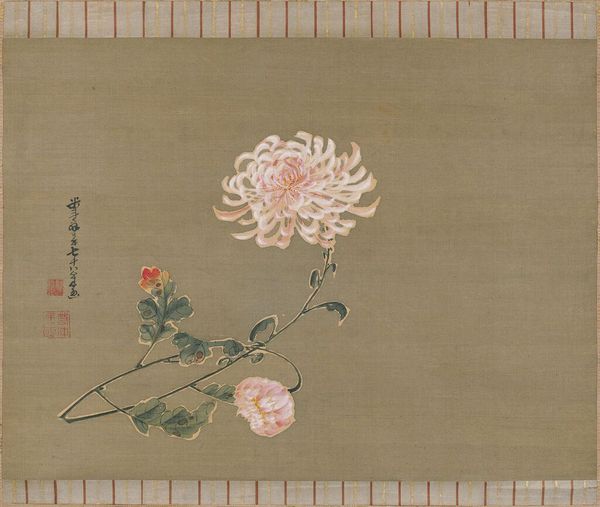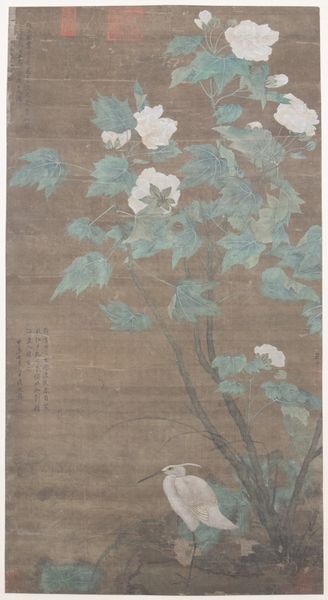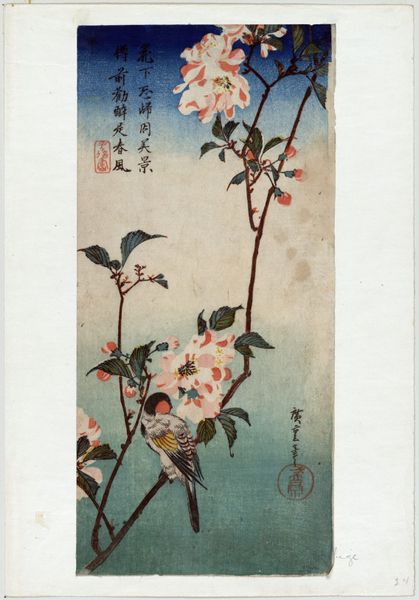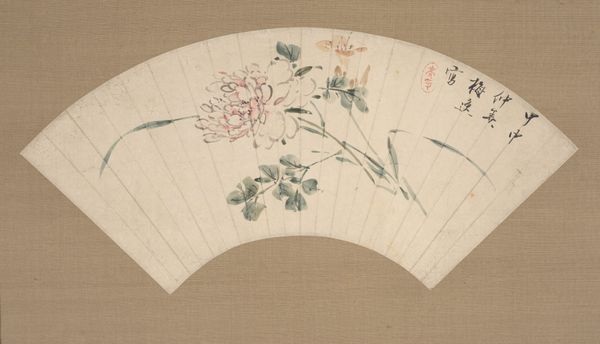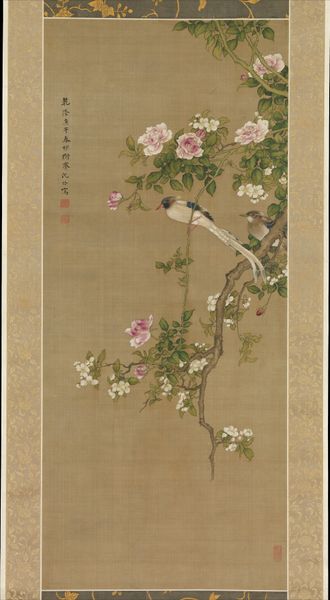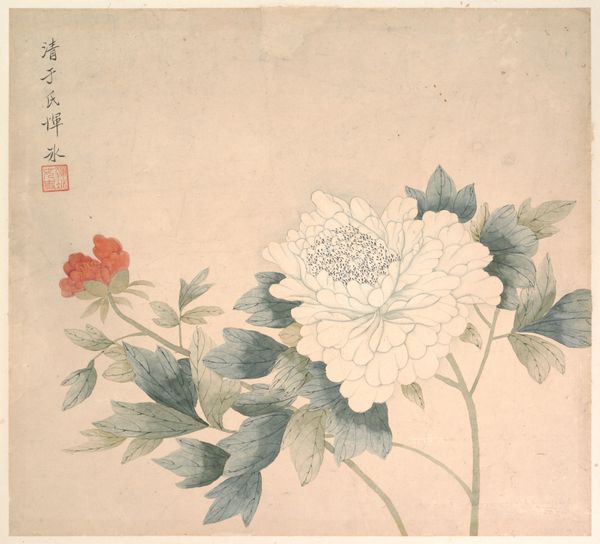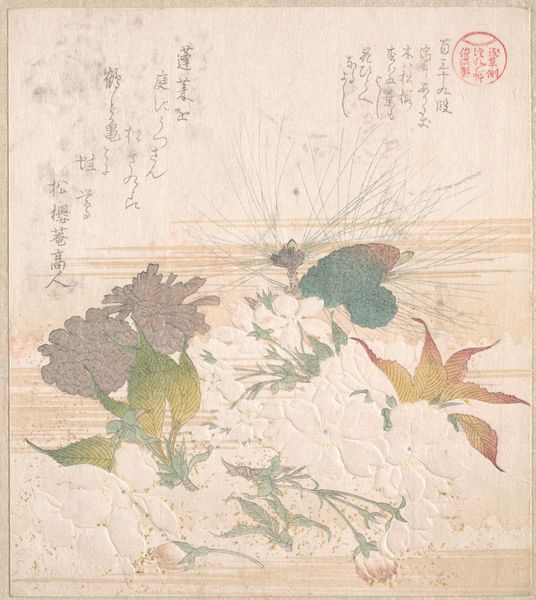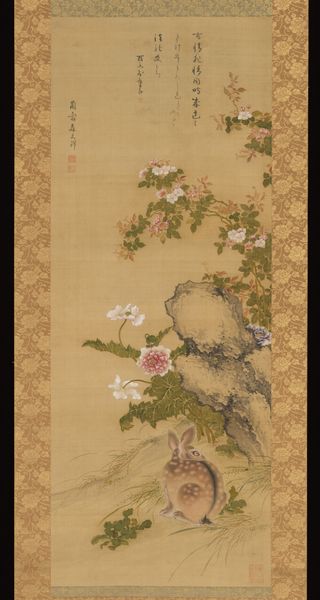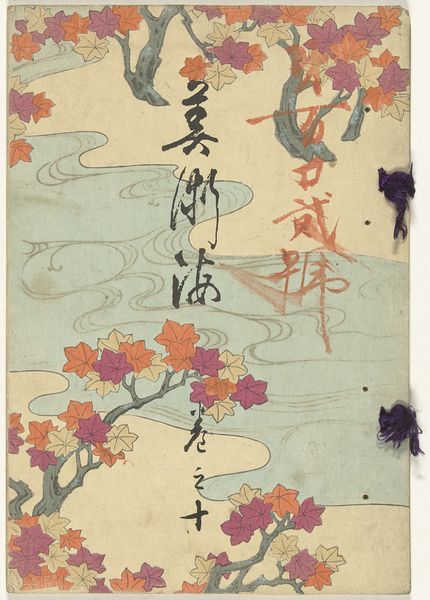
painting, paper, watercolor
#
water colours
#
painting
#
asian-art
#
paper
#
watercolor
Dimensions: Image: 16 3/4 × 12 1/2 in. (42.5 × 31.8 cm) Overall with mounting: 77 1/4 × 18 3/4 in. (196.2 × 47.6 cm) Overall with knobs: 77 1/4 × 18 7/8 in. (196.2 × 47.9 cm)
Copyright: Public Domain
Editor: Here we have Qian Weicheng's "Flowers," painted sometime between 1720 and 1772. It's a delicate watercolor on paper. The composition feels quite sparse, with the pale flowers against the muted background. How do you interpret this work? Curator: This piece speaks to the long history of flower painting in China, particularly its connection to gender and power. These seemingly innocuous images of flora often served as metaphors for feminine virtues, dictated and upheld by the patriarchy. What might the careful cultivation of these delicate blooms symbolize in terms of female roles and expectations within that society? Editor: I see what you mean. So, these aren't just pretty flowers; they’re loaded with cultural baggage. Does the artist challenge this symbolism at all, or reinforce it? Curator: That’s precisely the question we should be asking. Consider the artist’s own position. How does Qian Weicheng, painting during the Qing Dynasty, navigate these established visual codes? Is he subtly critiquing these ideals, or perpetuating them through his art? Think about the act of observing, the power dynamics inherent in the gaze. Editor: It’s making me think about who these paintings were for, and who had access to them. Were they meant to be displayed, or kept more privately? Curator: Exactly! Context is key. These paintings would have been circulated within a specific social sphere, likely among educated elites. Considering this audience helps us understand the possible readings and interpretations of the work. The delicate artistry and natural themes are aesthetically beautiful and symbolic tools which were deployed to subtly influence cultural values. Editor: I’d never considered flower paintings as having such a strong political undertone. Curator: Art, even seemingly passive representations of nature, can be a powerful site of cultural production and ideological reinforcement. Editor: I'll definitely look at these types of works with a new perspective going forward! Thanks for pointing that out.
Comments
No comments
Be the first to comment and join the conversation on the ultimate creative platform.

